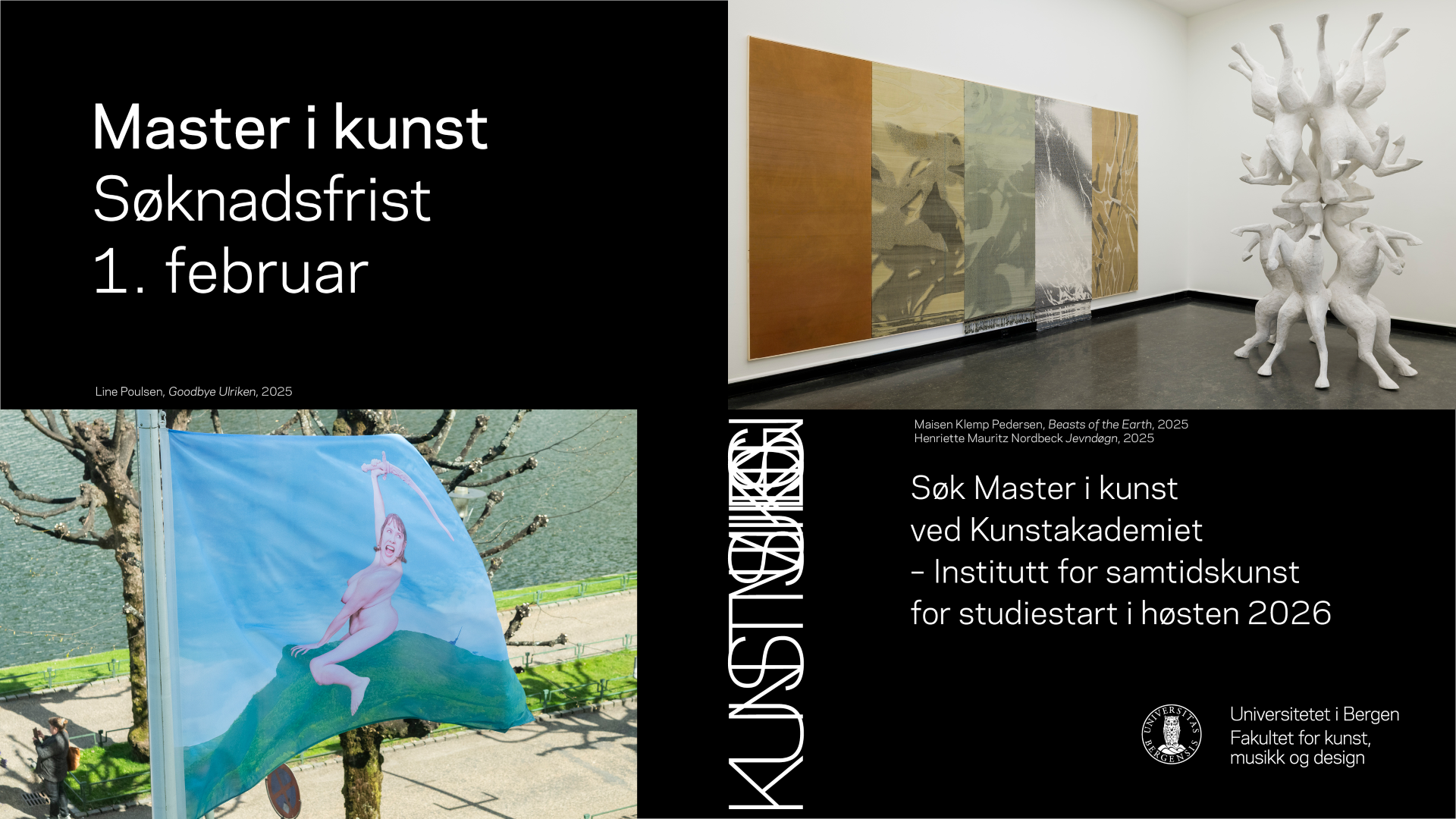
Over the course of just a few years of prolific exhibition activity, Ahmed Umar – who graduated from the MFA programme at the Oslo National Academy of the Arts in 2016 – has reached quite a few career milestones. His work has been purchased by several public collections, including the National Museum’s design collection, and he is among this year’s nominees for the prestigious Lorck Schive Kunstpris. Umar is also one of the few artists in their early thirties who receives a significant amount of media attention. This is largely thanks to his activist willingness to speak about how he was ostracised from his family and persecuted because of his sexual orientation (Umar is openly gay) and was eventually forced to flee his first homeland, Sudan. Freedom, family ties, and faith – in the context of personal experiences related to Sudan, Arab culture, and Islam – have been, and continue to be, the central themes of his work.
At Kunstnernes Hus, Umar’s biggest exhibition to date, Glowing Phalanges, encompasses ninety-nine sculptures conceived as prayer beads or amulets – objects which in the Sufi tradition have a protective function, but are banned in other interpretations of Islam that predominate in Sudan. Most of the sculptures are hand-sized and sit on gesturing plaster casts of the artist’s hand arranged in rows along all the walls. For example, 60 (2022–23) consists of a rounded and partially hollowed piece of wood which resembles a hip bone with small mother-of-pearl fragments carefully embedded in its lower part. The plaster hand on which it balances on has an outstretched index finger, as if pointing at the viewer. Some of the sculptures hang from the ceiling, such as the crescent-shaped 26 (2022–23), in which elephant tusks are attached to both ends of a polished piece of walnut; a plaster hand is poised in the middle of the arch, balancing on clenched fingers.
The press release states that many of the materials – valuable types of wood such as ebony, and various kinds of animal bones, leather, and more – have been sourced and reused from souvenir items made in African and Asian countries. Originally brought to Norway by tourists and missionaries, these “caricaturized human and animal figures” have now been acquired and picked apart by Umar. This iconoclastic dismantling of souvenirs points to how Europeans and North Americans have long confused our own stereotypes of African cultures and peoples with their actual traditions and practices. The philosopher Achille Mbembe has argued that anthropological knowledge production, meaning the process used to acquire knowledge about the Other, never fully recognises the Other as a thinking and knowledge-producing subject. Seen from such a perspective, the sculptures embody both a critique of European universalism and the colonial depletion of natural resources and culture in the Global South.

Aesthetic and cultural cross-pollination occurs when Umar uses materials that can be read as signs signifying something Nordic or Norwegian. Among other things, 53 (2022–23) consists of a whale’s shoulder blade inscribed with the words “Sydbreen Lyngsalpene summer 1983” on its yellow-white surface, an indication that the bone was found on or near a glacier in the mountainous Lyngen area, east of Tromsø. It is attached to a transparent crystal ball, which, in turn, is attached to a polished piece of wood with rounded edges.
In the second skylit hall, the glass ceiling is covered by a huge carpet adorned in script that resembles Arabic. The sound of prayer fills the darkened room and eventually slips into a form of religious chanting unknown to me, where male voices sing over drums. I stayed for long time, absorbed in the solemn atmosphere. With Umar’s biography in mind, it seems appropriate to assume that this part of the exhibition deals with estrangement, not only from religious identity, but also from a community and a narrative which, in the believer’s view, extends into eternity.
The first work I ever saw by Umar was his MFA graduate show piece What Lasts! (Sarcophagus) (2016), a sarcophagus made to contain his own body. This work, which is not present in this show, is often revisited in press coverage of the artist. This was for example the case in the episode on Umar in the series for Norwegian public television Kunstnerliv (Artists’ Lives) where the artist himself explains that he created the piece because a sibling told him that it would have been better if he were dead because of the shame his homosexuality had brought upon the family. It is a work that mainly functions as a proxy for the artist himself – a starting point for telling his undoubtedly important story.
By contrast, in Glowing Phalanges personal experience serves as a path towards grappling with a visual and material culture that Umar seems to find both beautiful and difficult. Thus, Umar’s biography also incorporates surrounding themes such as the imprint of colonialism and cultural appropriation. In terms of ideas, these works are far richer than Umar’s earliest efforts, while at the same time abounding in meticulous craftsmanship and eye-catching appeal. The latter makes diving into all this complexity a sheer joy.

